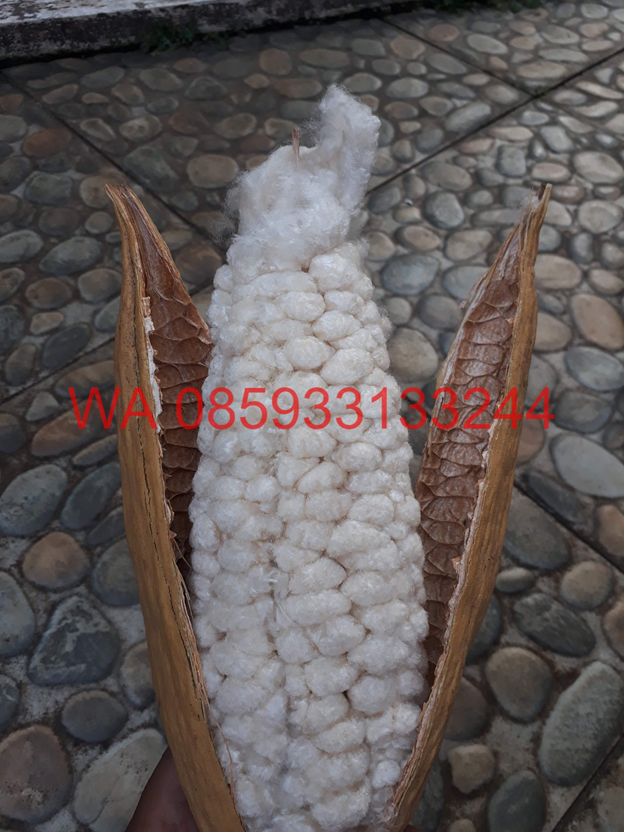Kapok plant or Ceiba pentandra is one of the plants known for producing natural plant-based fiber. Just like cotton, kapok manufacturers try to utilize all parts of the kapok for something useful. In this case, the discovery of the oil content in the seed led to numerous innovations. Here are the three applications of kapok seeds you can find around.
Here Are How the Byproduct Of Kapok Fiber Utilization

Kapok Seed Oil
One interesting about kapok is how rich the plant is. If you consider the properties of the fiber. Then it is not a surprise if the seed is also jam-packed with something useful. In this case, research reveals that kapok seeds contain about 24 to 40% oil. While each fruit seeds have 26 percent of seeds contents, which can reach up to 200 seeds.
If you calculate the whole production, 100 kilograms of cotton bundles can create up to 26-kilogram kapok seeds waste. It will be a “waste” if the manufacturer does nothing about it, and the fact is it can be very bad for nature. A long time ago, kapok seed is always thrown away due to the lack of information and underutilized state.
But, with the current technologies, the oil can be obtained by an extraction process that is similar to cotton seeds. It can be either by pressing down the seeds or using solvent extraction. As it extracted, the crude oil will have a brownish-yellow appearance. The oil can be used to cure wounds, relieve rheumatism, or even bioenergy.
Kapok Seed Soap

With the developing and ever better technologies, many kapok manufacturers try to add value for kapok by utilizing the byproduct of kapok. In a matter of fact, the high content of oil in the seeds is high enough to be a raw material of solid soap. With the same extraction method as before, the crude kapok oil will have to go through some other process, including degumming, neutralizing, bleaching, and filtration.
Kapok Seed Meal
Another great utilization or application of the byproduct from kapok is the seed meal. After the oil is extracted until it dry, the residue from the seed oil is once again processed into something different. In this case, the dried seed is used as an animal feed. Once again it is not something new, especially for locals who maximize the kapok tree utilization.
The dried product will be transformed into two types of kapok seed meal, which as the kapok seed cake and powder. The powder type of meal is easy to mix with different animal feed, while the cake is in the hardened form. Both products are mainly used in the animal feed industry for pig or cows and as fertilizer for mushroom and potato plants.
The idea of utilizing all parts of the part is not something new. Indonesian local has been using all parts of the kapok tree for different uses, including using the bark for medicine. With more modernized technology, there is hope that innovation will increase soon. Thus, if you are looking for kapok filling or curious about kapok seed oil price, check out kapokfibersuppliers.com.

